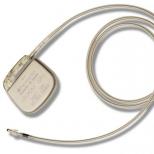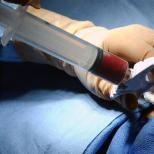Treatment of vegetative-vascular dystonia in adolescents
Adolescents are often diagnosed with vegetative-vascular dystonia. Where did this disease come from at such an early age? How serious is this and should anything be done?
The main features of the VSD
Dystonia is not a disease, but a complex of symptoms. There can be many reasons for the occurrence of vascular dystonia, but the main mechanism is disturbances in the work of the nervous system of the autonomic type, both peripheral and central. These violations provoke failures in all organs and systems. Vegetovascular dystonia can significantly worsen the course of other diseases, as well as provoke new ones, including the psychosomatic component.
Vegetative-vascular dystonia is often diagnosed in adolescence, as this is one of the important periods, which is accompanied by serious physiological changes.
Causes
The incidence of VVD in adolescents is largely due to physiological and psychological changes during this period. An important factor is also hereditary predisposition. The main reasons for the development of a complex of VVD symptoms are:
- Heredity.
- Infectious diseases.
- CNS defects.
- Complications during pregnancy or childbirth.
- A lifestyle that is often aggravated in adolescence by smoking, alcohol, stress, strenuous study, physical inactivity.
- A surge of hormones, a discrepancy between the physical development of the maturity of the nervous system.
- Psychological immaturity and emotional instability (perfectionism, neurosis, unpreparedness for school and life difficulties).
Symptoms
Rapid growth and other factors lead to a discrepancy between the needs of the body and the capabilities of the nervous and vascular systems. Dystonia of the autonomic system and blood vessels is manifested by the following symptoms:
- Shortness of breath, causeless shortness of breath even at rest.
- Changes in blood pressure in one direction or another, sudden changes.
- Cardiopalmus.
- Cold extremities, a feeling of chills as a result of a malfunction of the autonomic nervous system.
- Dizziness, fainting.
- Sleep disorders, anxiety, depression.
- Pain in the chest.
- Increased sweating.
- Disorders of the digestive system (nausea, pain, problems with appetite).
- Poor health in uncomfortable conditions - cold, heat, stuffiness.
- Bad mood, irritability.

Vegetative-vascular dystonia in adolescents can develop in one of three types:
- Hypokinetic.
- Hyperkinetic.
- Mixed.
Most often, during puberty, a hyperkinetic and mixed type occurs, on which the symptoms of dystonia also depend. With increased pressure, children complain of headaches, fear, numbness of the limbs, and frequent heartbeats. With reduced pressure - a lack of air, a rare pulse, heart failure.
Treatment
Treatment is impossible without adjusting the lifestyle of a teenager. Only the correct functioning of the nervous system of internal organs can save you from the symptoms of vegetative-vascular dystonia. To do this, you do not always need to take medications, a teenager just needs to adhere to the following recommendations:
- Make sure your diet is balanced. Rapid growth during adolescence requires different nutrients. A teenager's food should contain all the necessary vitamins and minerals. It is recommended to exclude flour, sweet and fatty foods.
- Go in for sports. Moderate physical activity will train the cardiovascular system, as well as improve overall health. Swimming, running or cycling is recommended.
- A healthy lifestyle also includes adequate sleep. Try to get enough sleep and stick to the routine.
- A contrast shower will help strengthen blood vessels and minimize the likelihood of symptoms of dystonia.
- Some types of massages are allowed, but this requires prior consultation with a doctor. Massage of the neck, back, and head can help.
- Take soothing baths with sea salt or pine supplements.
- Monitor the state of your nervous system - do not take everything to heart, devote time to your favorite activities, relieve nervous tension.
- Get rid of bad habits. Alcohol and smoking have an extremely negative impact on vascular health.
Drug treatment is prescribed to relieve severe symptoms of vegetative-vascular dystonia. It can be antihypertensive drugs, beta-blockers. To restore the functioning of the nervous system, you can take sedatives in a course.
Consequences
Although vegetative-vascular dystonia causes discomfort to a person, doctors do not consider it a serious health disorder. However, such symptoms and unstable conditions should not be ignored.
Imbalance in the work of organs can lead to a decrease in concentration, performance. An important consequence may be arterial hypertension, which will become a serious disease at an older age. A change in vascular tone, which is constantly observed with VVD, can lead to strokes, phlebitis and thrombosis. In addition, the child experiences a feeling of fear every time he has unexpected attacks of dystonia. This can significantly disrupt his psychological peace and also lead to problems in the future.
By itself, vegetative-vascular dystonia is not dangerous. However, its consequences can be expressed by serious diseases. At an early stage, it is much easier to get rid of and even prevent many problems. Symptoms of vegetative-vascular dystonia are very dependent on the general state of health. Try to eat right, play sports, walk a lot and be less nervous - then uncomfortable conditions will bypass you.





